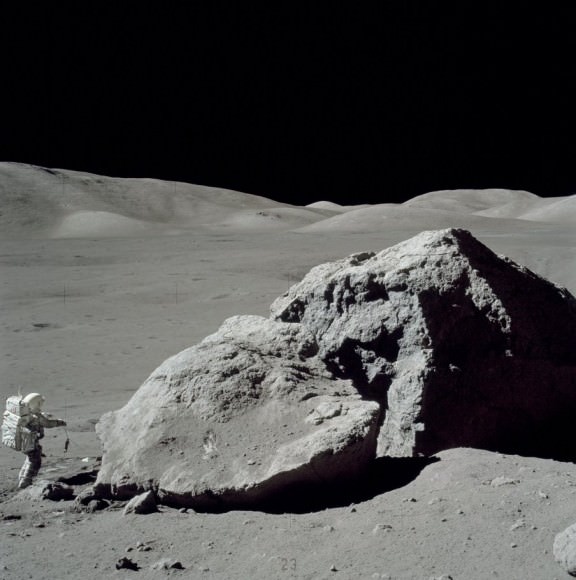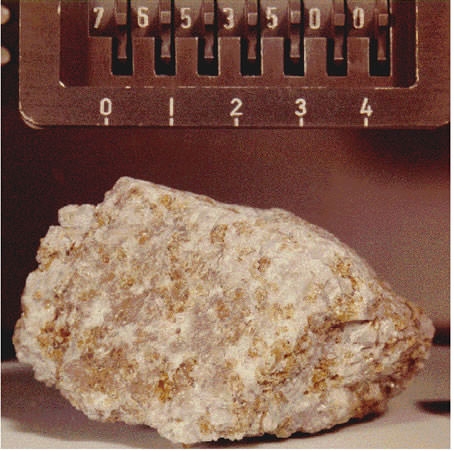It’s been a mystery ever since the Apollo astronauts brought back samples of lunar rocks in the early 1970s. Some of the rocks had magnetic properties, especially one collected by geologist Harrison “Jack” Schmitt. But how could this happen? The Moon has no magnetosphere, and most previously accepted theories state that it never did. Yet here we have these moon rocks with undeniable magnetic properties… there was definitely something missing in our understanding of Earth’s satellite.
Now a team of researchers at the University of California, Santa Cruz thinks they may have cracked this enigmatic magnetic mystery.
In order for a world to have a magnetic field, it needs to have a molten core. Earth has a multi-layered molten core, in which heat from the interior layer drives motion within the iron-rich outer layer, creating a magnetic field that extends far out into space. Without a magnetosphere Earth would have been left exposed to the solar wind and life as we know itcould may never have developed.
Simply put, Earth’s magnetic field is crucial to life… and it can imbue rocks with magnetic properties that are sensitive to the planet-wide field.
But the Moon is much smaller than Earth, and has no molten core, at least not anymore… or so it was once believed. Research of data from the seismic instruments left on the lunar surface during Apollo EVAs recently revealedthat the Moon may in fact still have a partially-liquid core, and based on a paper published in the November 10 issue of Nature by Christina Dwyer, a graduate student in Earth and planetary sciences at the University of California, Santa Cruz, and her co-authors Francis Nimmo at UCSC and David Stevenson at the California Institute of Technology, this small liquid core may once have been able to produce a lunar magnetic field after all.
The Moon orbits on its axis at such a rate that the same side always faces Earth, but it also has a slight wobble in the alignment of its axis (as does Earth.) This wobble is calledprecession. Precession was stronger due to tidal forces when the Moon was closer to Earth early in its history. Dwyer et al. suggest that the Moon’s precession could have literally “stirred” its liquid core, since the surrounding solid mantle would have moved at a different rate.
This stirring effect – arising from the mechanical motions of the Moon’s rotation and precession, not internal convection – could have created a dynamo effect, resulting in a magnetic field.
This field may have persisted for some time but it couldn’t last forever, the team said. As the Moon gradually moved further away from Earth the precession rate slowed, bringing the stirring process – and the dynamo – to a halt.
“The further out the moon moves, the slower the stirring, and at a certain point the lunar dynamo shuts off,” said Christina Dwyer.
Still, the team’s model provides a basis for how such a dynamo could have existed, possibly for as long as a billion years. This would have been long enough to form rocks that would still exhibit some magnetic properties to this day.
The team admits that more paleomagnetic research is needed to know for sure if their proposed core/mantle interaction would have created the right kind of movements within the liquid core to create a lunar dynamo.
“Only certain types of fluid motions give rise to magnetic dynamos,” Dwyer said. “We calculated the power that’s available to drive the dynamo and the magnetic field strengths that could be generated. But we really need the dynamo experts to take this model to the next level of detail and see if it works.”
In other words, they’re still working towards a theory of lunar magnetism that really sticks.
Source: Universe Today


No hay comentarios:
Publicar un comentario